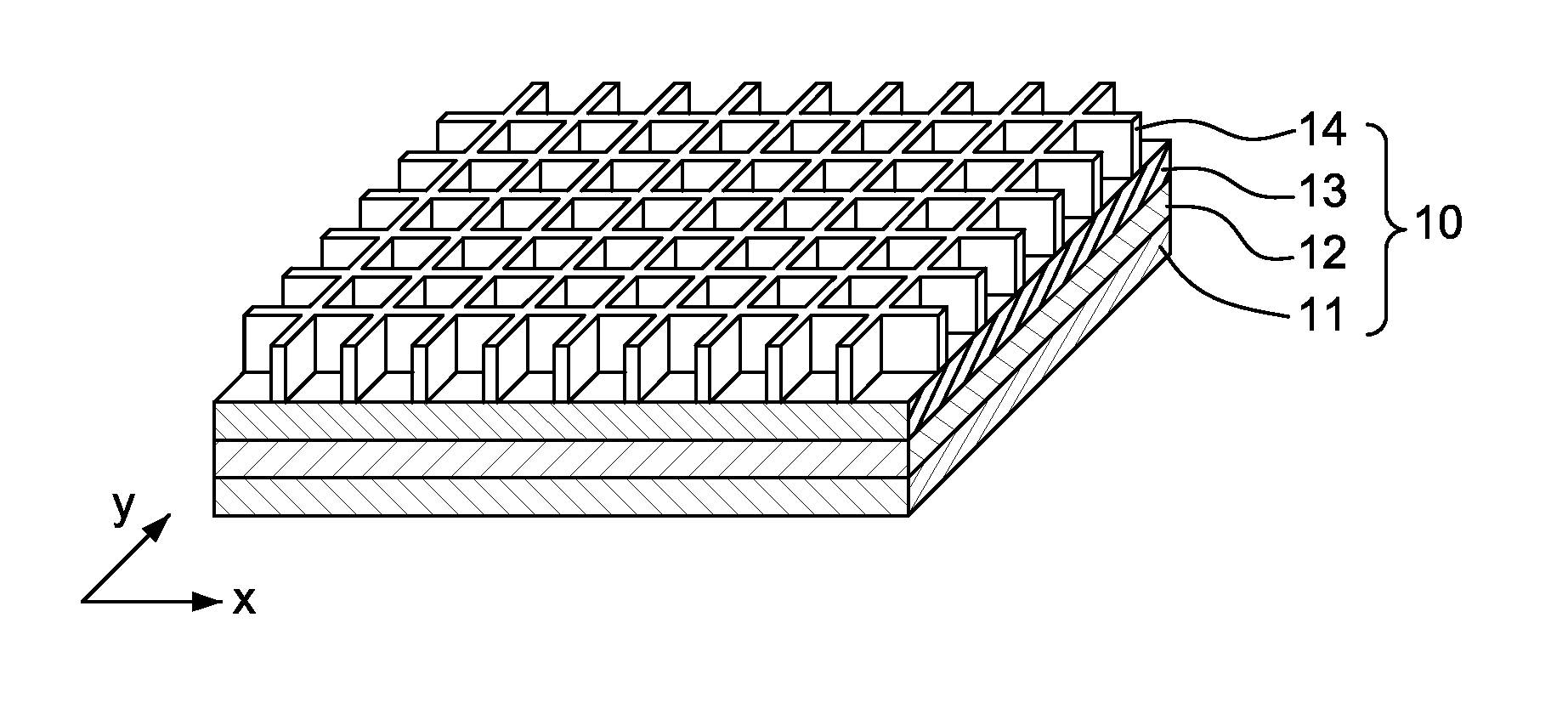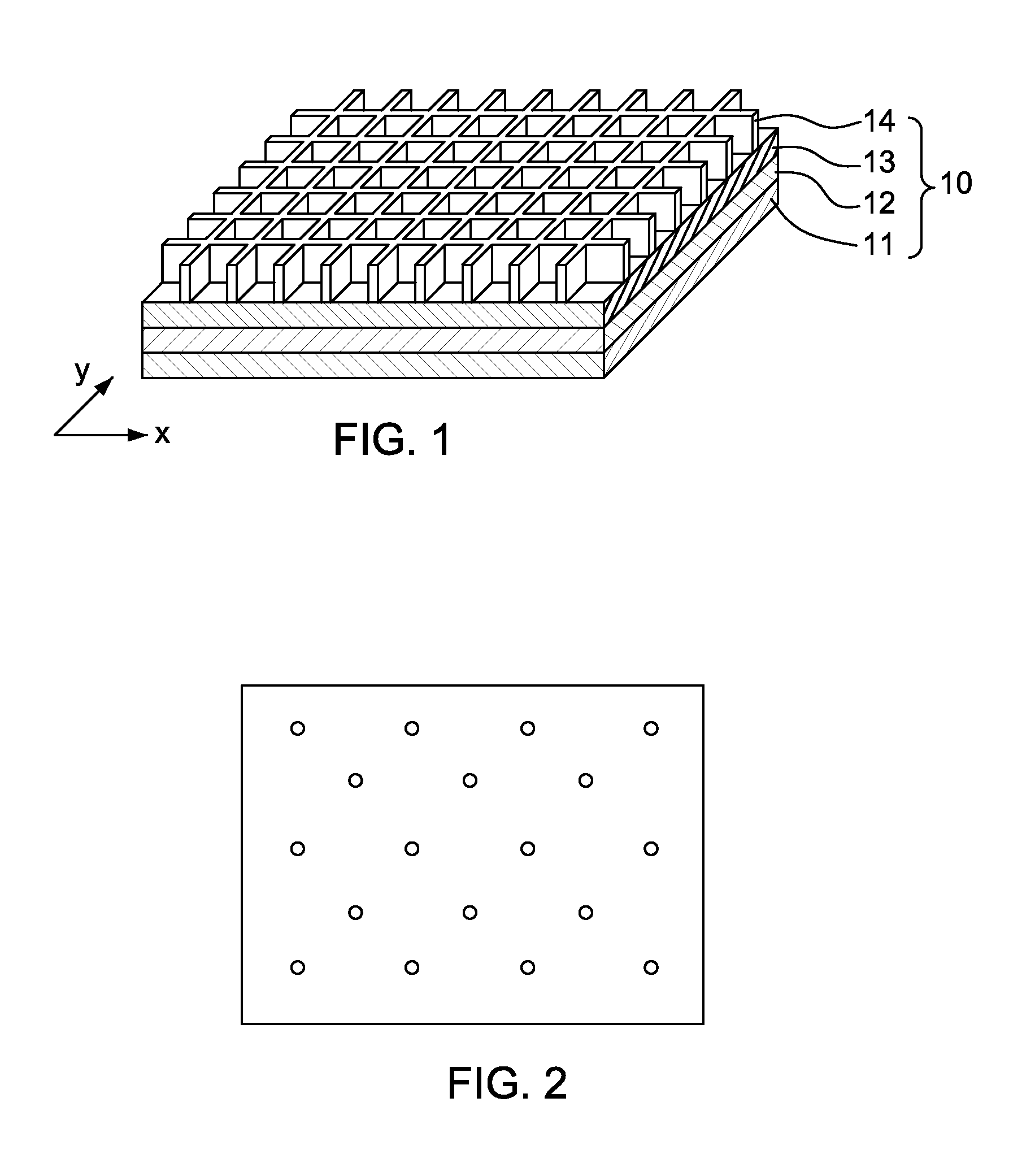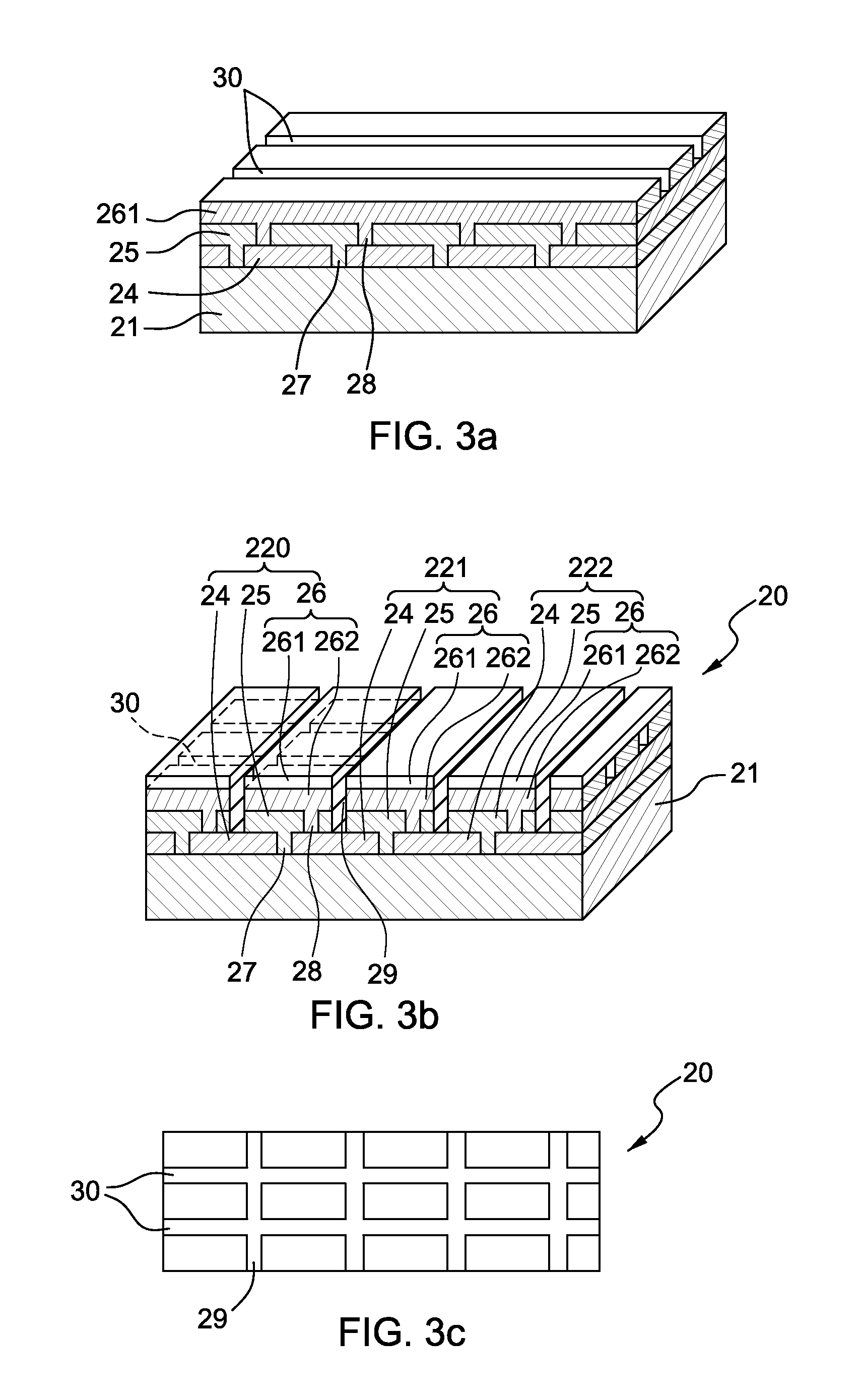Process for making partially transparent photovoltaic modules
a photovoltaic cell and partially transparent technology, applied in semiconductor/solid-state device manufacturing, electrical equipment, semiconductor devices, etc., can solve the problems of complex photovoltaic device manufacturing process, high cost, and higher resistance of transparent conductive oxides
- Summary
- Abstract
- Description
- Claims
- Application Information
AI Technical Summary
Benefits of technology
Problems solved by technology
Method used
Image
Examples
Embodiment Construction
[0019]The present invention is illustrated below in detail by the embodiments with reference to the drawings, which are not intended to limit the scope of the present invention. It will be apparent that any modifications or alterations that can easily be accomplished by those having ordinary skill in the art fall within the scope of the disclosure of the specification.
[0020]FIG. 1 illustrates a photovoltaic cell made according to the process of the present invention. As shown in FIG. 1, the photovoltaic cell 10 comprises a front electrode 12, a photoelectric conversion element 13 and a patterned back electrode 14 disposed in order on a transparent substrate 11. The transparent substrate 11 of the present invention can be any substrate known to persons having ordinary skill in the art, such as plastic or glass. The front electrode 12 can be made of any suitable material known to persons having ordinary skill in the art, for example, but is not limited to, transparent conductive oxide...
PUM
 Login to View More
Login to View More Abstract
Description
Claims
Application Information
 Login to View More
Login to View More - R&D
- Intellectual Property
- Life Sciences
- Materials
- Tech Scout
- Unparalleled Data Quality
- Higher Quality Content
- 60% Fewer Hallucinations
Browse by: Latest US Patents, China's latest patents, Technical Efficacy Thesaurus, Application Domain, Technology Topic, Popular Technical Reports.
© 2025 PatSnap. All rights reserved.Legal|Privacy policy|Modern Slavery Act Transparency Statement|Sitemap|About US| Contact US: help@patsnap.com



